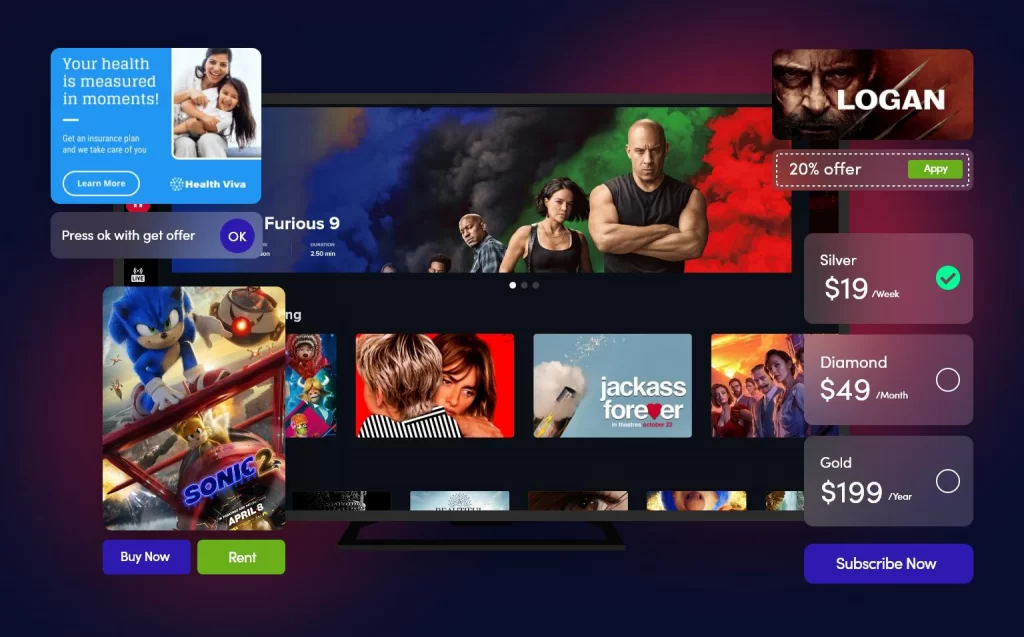8 Easy Facts About Apollo Group Tv Explained
8 Easy Facts About Apollo Group Tv Explained
Blog Article
All about Apollo Group Tv
Table of ContentsLittle Known Facts About Apollo Group Tv.The Best Strategy To Use For Apollo Group TvThe Only Guide to Apollo Group TvThe Of Apollo Group Tv
In this scenario, instead of having three-minute industrial places throughout a 30-minute tv program, TV programming may alter to one where a customer will be needed to have a monthly membership, to ensure that they cen sight targeted banner advertisements. This kind of advertising and marketing currently occurs online, and the amount of data television business gather enables them to do much the exact same.Explain the major patterns amongst the broadcasting and cable television networks. Popular radio reveals such as authorities dramatization Dragnet and western cowboy series Gunsmoke were adjusted for tv, and new TV programs were funded by single marketers, just as radio shows had actually been.
Today, the television market is much much more complex. Programs are funded by numerous advertisers; programs is regulated by major media empires; and the three major networks no much longer dominate the airwaves yet instead share their customers with numerous cord networks. Several aspects account for these patterns within the industry, including technological advancements, federal government regulations, and the development of new networks.

The Greatest Guide To Apollo Group Tv
Established in 1969, (PBS) developed out of a record by the Carnegie Compensation on Educational Television, which examined the duty of instructional, noncommercial television on society. Public tv was additionally meant to provide global access to tv for customers in rural locations or audiences that might not afford to pay for personal television solutions.
The period in between 1950 and 1970 is historically acknowledged as the. In addition to a tiny portion of airtime regulated by public television, the 3 major networks (called the Big Three) controlled the television sector, collectively making up more than 95 percent of prime-time watching. In 1986, Rupert Murdoch, the head of international business Information Corp, launched the Fox network, testing the dominance of the Big Three.
Targeting young and minority target markets with shows such as Buffy the Vampire Slayer, Moesha, Dawson's Creek, and The Wayans Bros., the brand-new networks wished to attract terminals away from their old network associations. Instead than duplicating the success of Fox, UPN and WB struggled to make an influence. Not able to bring in many affiliate terminals, both fledgling networks reached fewer households than their larger opponents because they were impossible in some smaller sized cities.
This choice led the way for the advancement of cord flick channels, adding to the exponential growth of cord in the 1980s and 1990s. apollo group tv app. More deregulation of cord in the 1984 Cable Television Communications Policy Act eliminated constraints on wire prices, enabling operators to charge what they wanted for cable television services as long as there worked competition to the service (a requirement that over 90 percent of all cable television markets might satisfy)
The 5-Minute Rule for Apollo Group Tv

Having actually produced the very first "superstation," Turner expanded his world by establishing 24-hour news network CNN in 1980. At the end of the year, 28 nationwide programs services were available, and the wire transformation had started. Over the next years, the market underwent a duration of fast growth and appeal, and by 1994 customers could pick from 94 standard and 20 premium cable solutions.
Figure 9 - https://moz.com/community/q/user/apollogtv01.16 Boosted competition from cord networks has created a stable decrease in the networks' target market ratings. Throughout the 1950s, the price of creating a solitary tv show boosted as programs became longer and manufacturing expenses soared. Sponsorship on network television moved from solitary sponsorship, in which a program was totally supported and created by one marketer, to numerous sponsorship, in which advertisers purchased 1- or 2-minute places on the program
Pick one of the Big 4 networks and publish out its once a week shows schedule. Watch the network's prime-time programs over the course of a week, noting the target demographic for each show.
The 3-Minute Rule for Apollo Group Tv

Direct TV, frequently referred to as traditional program television, incorporates cord and satellite television. It's called "linear" because content adheres to a fixed programs routine, unlike on-demand content which the individual visitor determines to enjoy based on their own choices and timetable. When you ask, "What is linear Television?", believe of it as the classic means of enjoying television that has actually been around for years.
Report this page